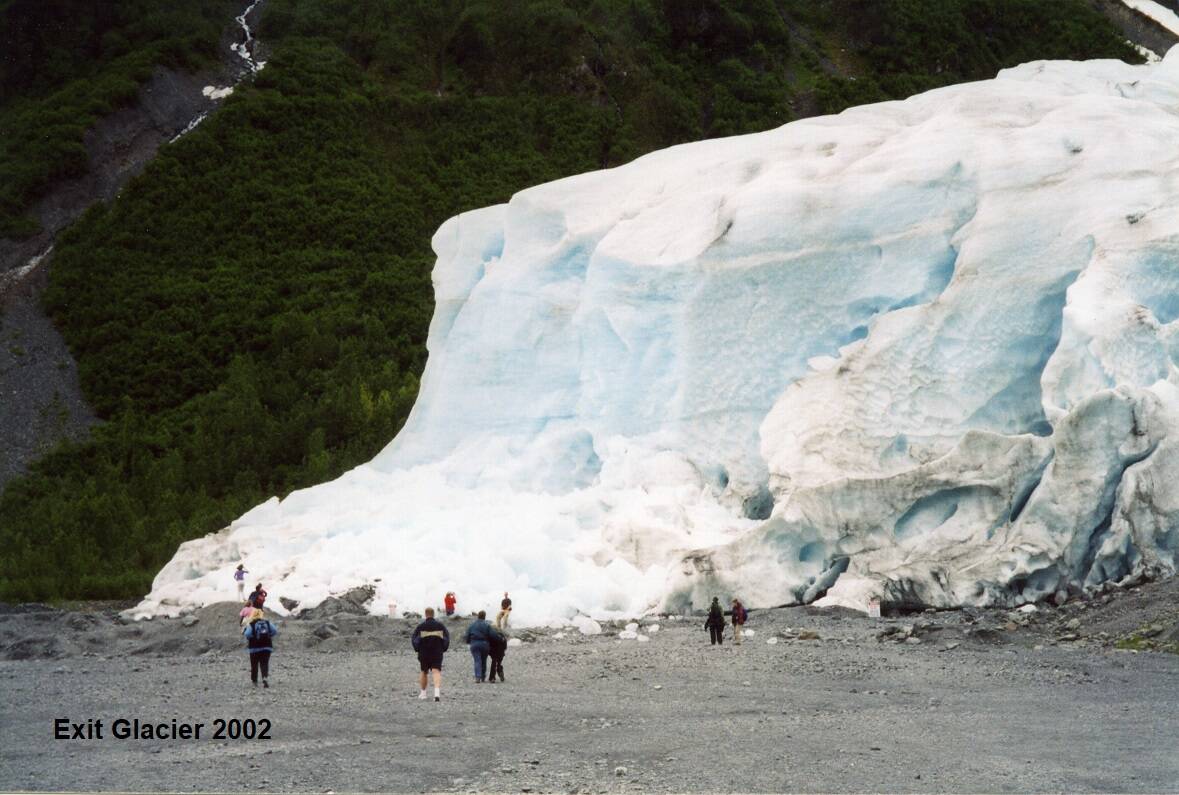The most heavily trafficked area of Kenai Fjords National Park could get a makeover under a management plan being developed in response to retreat of Exit Glacier due to climate change. The park issued a formal call for public input on the plan last month in addition to launching a StoryMap and website to help better explain why a new management plan is necessary.
The area around Exit Glacier, which the park calls the frontcountry area, is the only part of Kenai Fjords National Park accessible by road and is the park’s “most frequently visited,” according to the National Park Service. Exit Glacier, which used to be more accessible to park visitors, has retreated by roughly 2,300 feet in the last 13 years.
Among other things, the new management plan is intended to address issues caused by glacial retreat, expand opportunities for visitors in the area and protect park resources, the park said in a release. Public input solicited during the comment process will be used to help planners and managers “define a vision” for the future of the space.
Included in the goals of the plan are the expansion of shoulder seasons for the area, the addition of more visitor facilities and to provide new visitor activities that more closely align with changes in visitor numbers. Park features contained in the frontcountry area include the nature center and parking lot, the education pavilion and trailheads.
From the park’s frontcountry area, visitors can access the 8.2-mile Harding Icefield Trail, the 1-mile Glacier View Loop Trail and the Glacier Overlook Trail. However, the ability of visitors to “easily approach (Exit) glacier on foot” as described by the area’s 2004 management plan is no longer viable.
“In short, the glacier is changing so quickly that the experience as envisioned in the 2004 plan is no longer possible; hence there is a need for a new frontcountry management plan,” the project StoryMap says.
Trails in the frontcountry area have previously been expanded to “chase” the glacier, including in 2005 and 2010, however, that method is no longer considered feasible due to expense, according to the StoryMap. Those trails also suffer frequent damage from flooding and glacier outbursts that more long-term budget increases would be needed to address.
The foundation of the plan currently being developed, the StoryMap says, comes from public workshops held in 2018 that explored potential strategies in different climate scenarios. Suggested strategies from those workshops include expanding visitor programming in the area, better managing traffic congestion, managing visitor expectations by emphasizing frontcountry activities and identifying feasible trail expansions.
As visitors prepare to offer insight into the management plan, Kenai Fjords National Park asks that consideration be given to what areas of the park individuals enjoy most, what kind of experiences they want future generations to have at the park and what strategies stand out as particularly promising.
Public comments on the management plan are being accepted through Feb. 18 and can be submitted on the project website at parkplanning.nps.gov/projectHome.cfm?projectId=106155.
Reach reporter Ashlyn O’Hara at ashlyn.ohara@peninsulaclarion.com.

